The Transport of Materials Across the Cell membrane

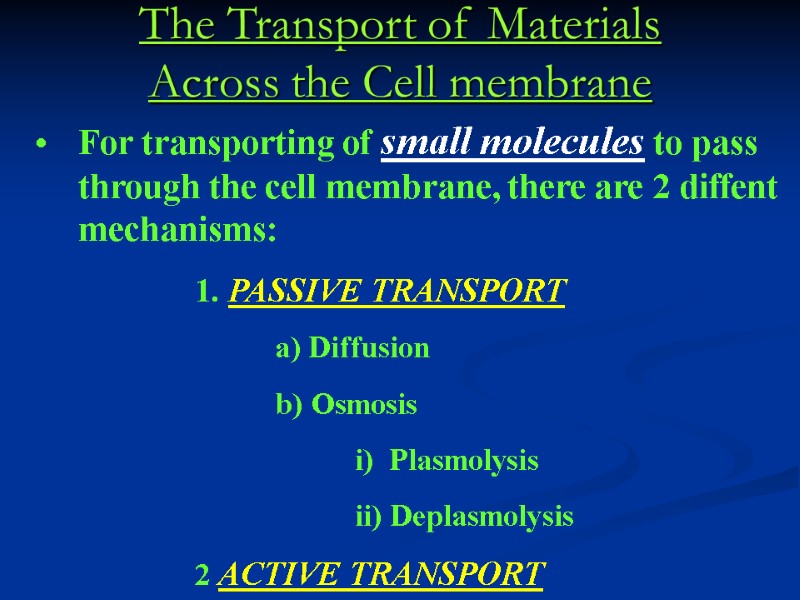
The Transport of Materials Across the Cell membrane For transporting of small molecules to pass through the cell membrane, there are 2 diffent mechanisms: 1. PASSIVE TRANSPORT a) Diffusion b) Osmosis i) Plasmolysis ii) Deplasmolysis 2 ACTIVE TRANSPORT
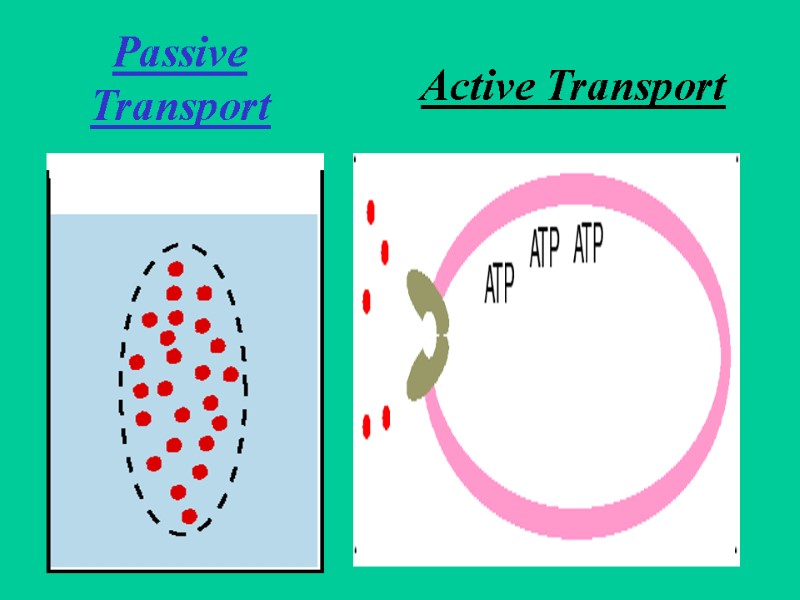
Passive Transport Active Transport
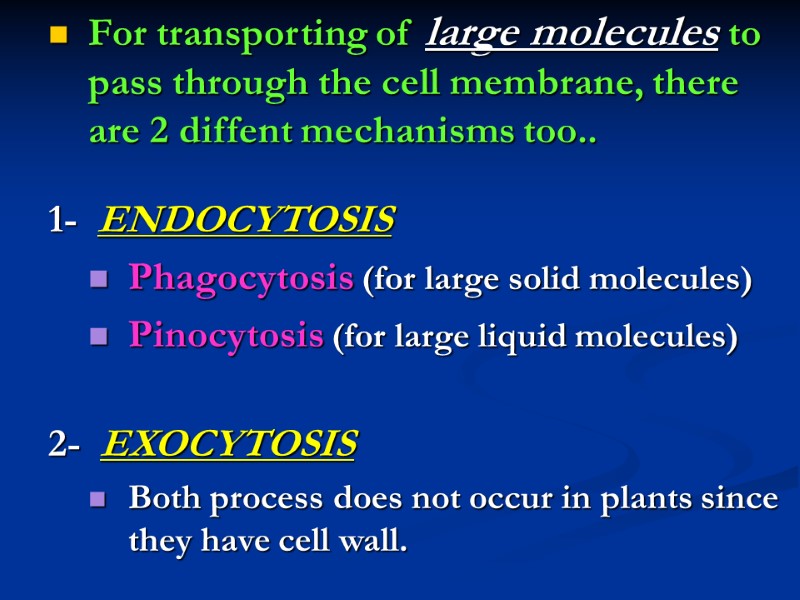
For transporting of large molecules to pass through the cell membrane, there are 2 diffent mechanisms too.. 1- ENDOCYTOSIS Phagocytosis (for large solid molecules) Pinocytosis (for large liquid molecules) 2- EXOCYTOSIS Both process does not occur in plants since they have cell wall.
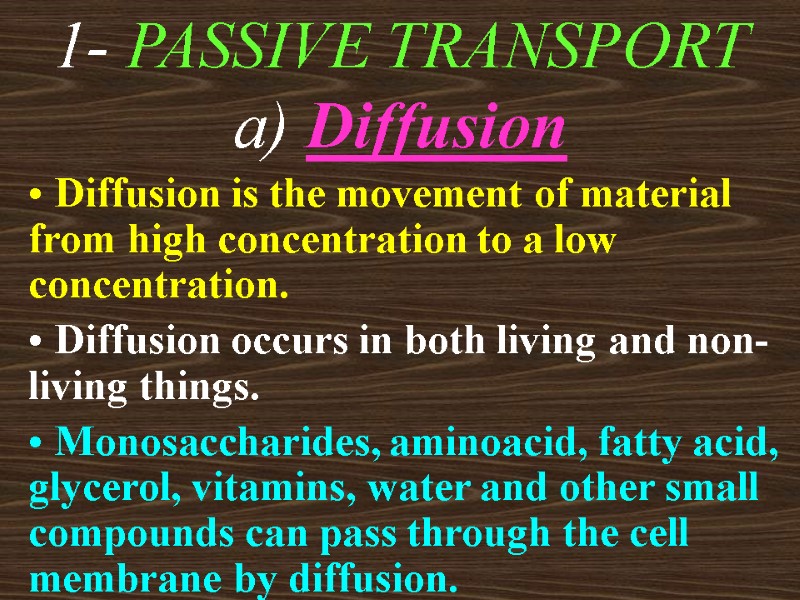
1- PASSIVE TRANSPORT a) Diffusion Diffusion is the movement of material from high concentration to a low concentration. Diffusion occurs in both living and non-living things. Monosaccharides, aminoacid, fatty acid, glycerol, vitamins, water and other small compounds can pass through the cell membrane by diffusion.
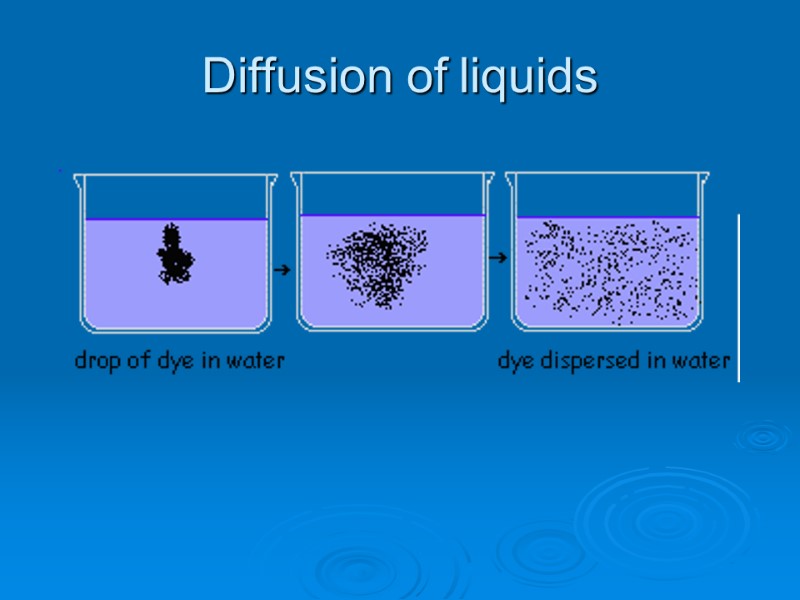
Diffusion of liquids
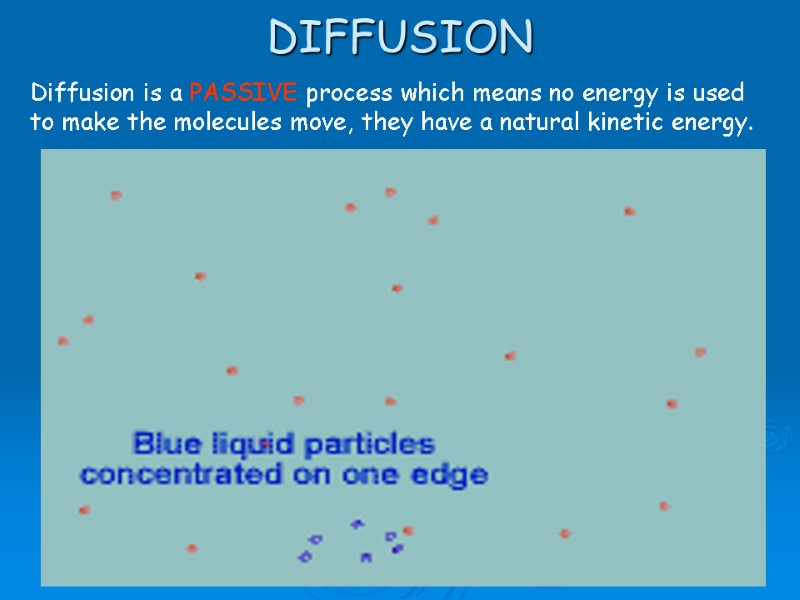
DIFFUSION Diffusion is a PASSIVE process which means no energy is used to make the molecules move, they have a natural kinetic energy.
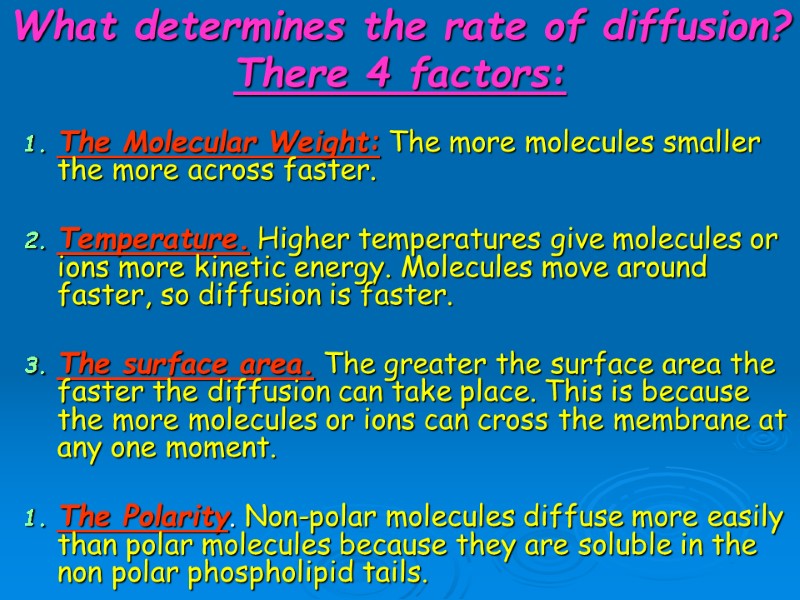
What determines the rate of diffusion? There 4 factors: The Molecular Weight: The more molecules smaller the more across faster. Temperature. Higher temperatures give molecules or ions more kinetic energy. Molecules move around faster, so diffusion is faster. The surface area. The greater the surface area the faster the diffusion can take place. This is because the more molecules or ions can cross the membrane at any one moment. The Polarity. Non-polar molecules diffuse more easily than polar molecules because they are soluble in the non polar phospholipid tails.
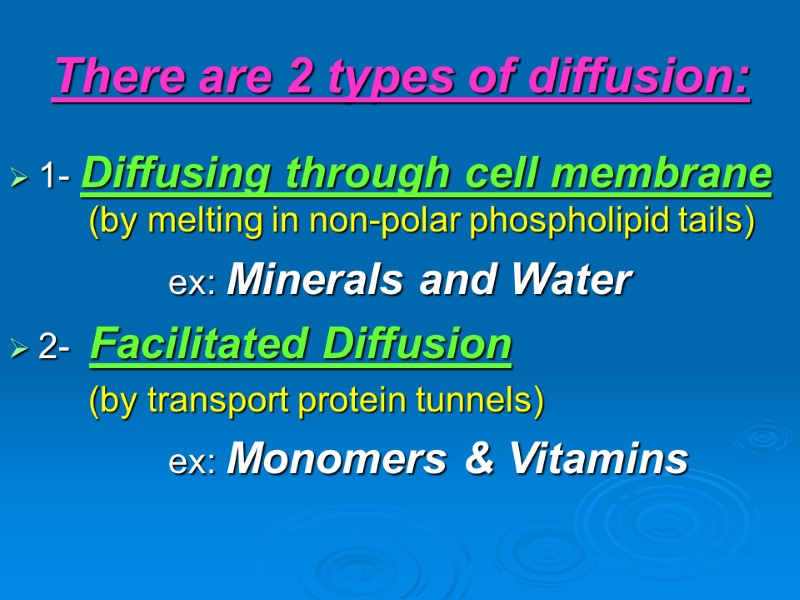
There are 2 types of diffusion: 1- Diffusing through cell membrane (by melting in non-polar phospholipid tails) ex: Minerals and Water 2- Facilitated Diffusion (by transport protein tunnels) ex: Monomers & Vitamins
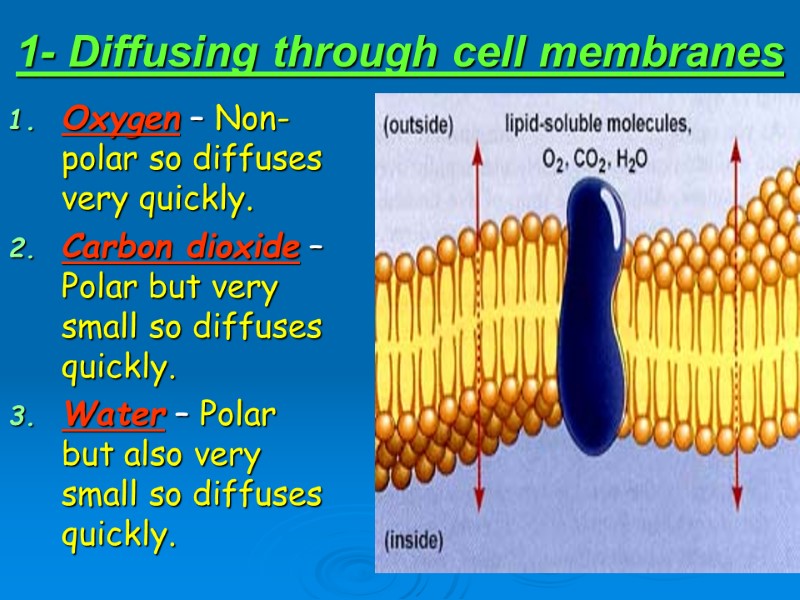
1- Diffusing through cell membranes Oxygen – Non-polar so diffuses very quickly. Carbon dioxide – Polar but very small so diffuses quickly. Water – Polar but also very small so diffuses quickly.
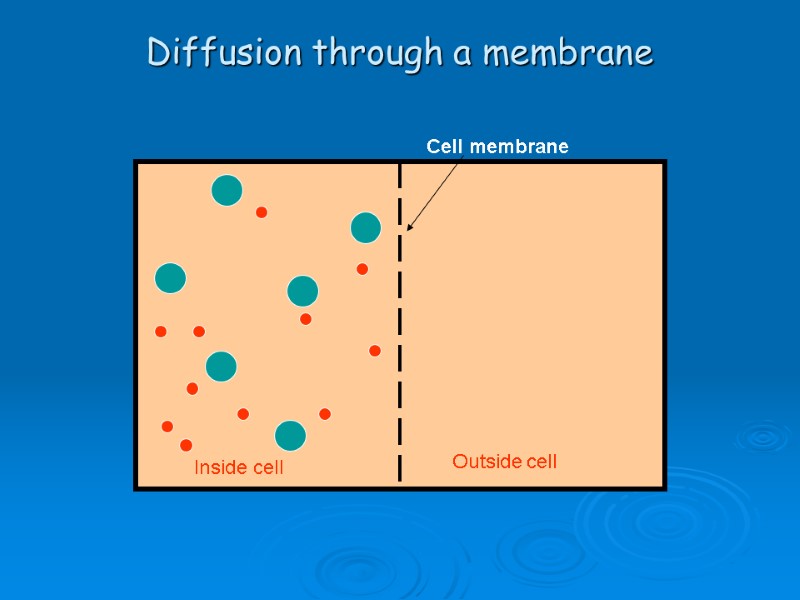
Diffusion through a membrane Cell membrane Inside cell Outside cell

Diffusion through a membrane Cell membrane Inside cell Outside cell diffusion
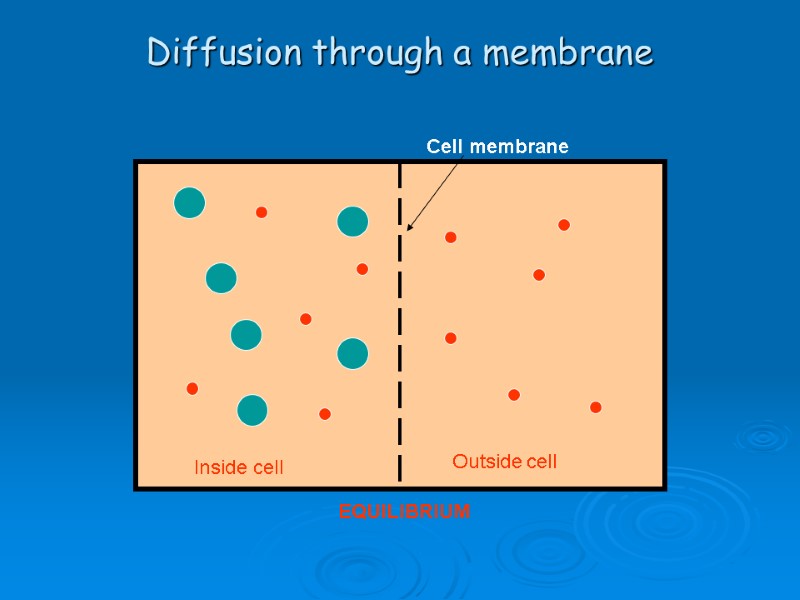
Diffusion through a membrane Cell membrane Inside cell Outside cell EQUILIBRIUM
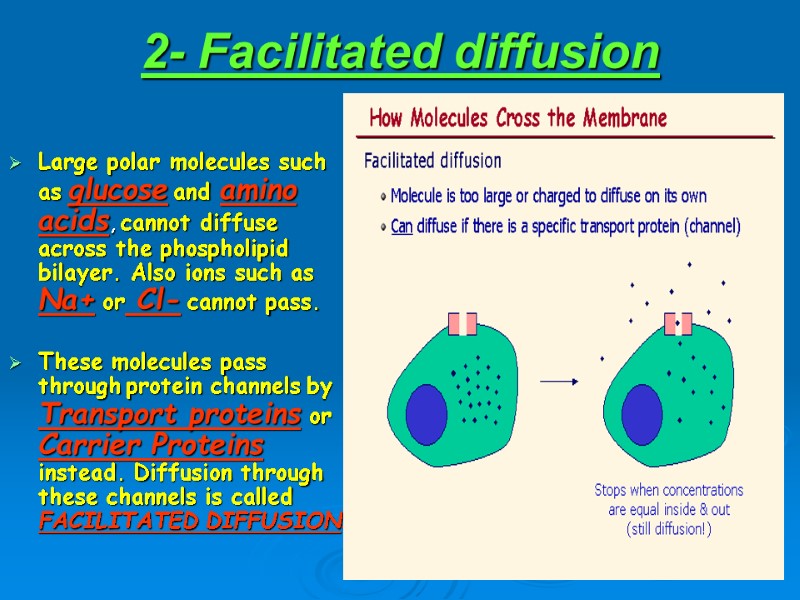
2- Facilitated diffusion Large polar molecules such as glucose and amino acids, cannot diffuse across the phospholipid bilayer. Also ions such as Na+ or Cl- cannot pass. These molecules pass through protein channels by Transport proteins or Carrier Proteins instead. Diffusion through these channels is called FACILITATED DIFFUSION.
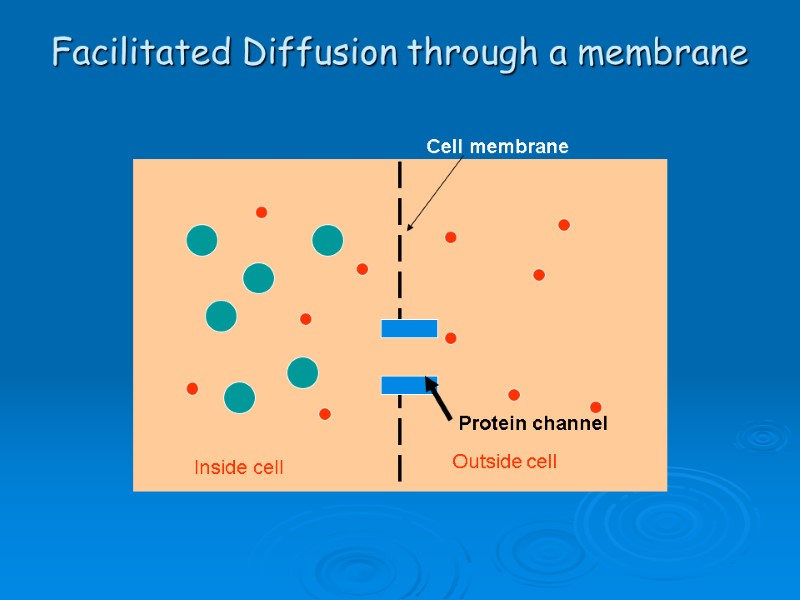
Facilitated Diffusion through a membrane Cell membrane Inside cell Outside cell Protein channel
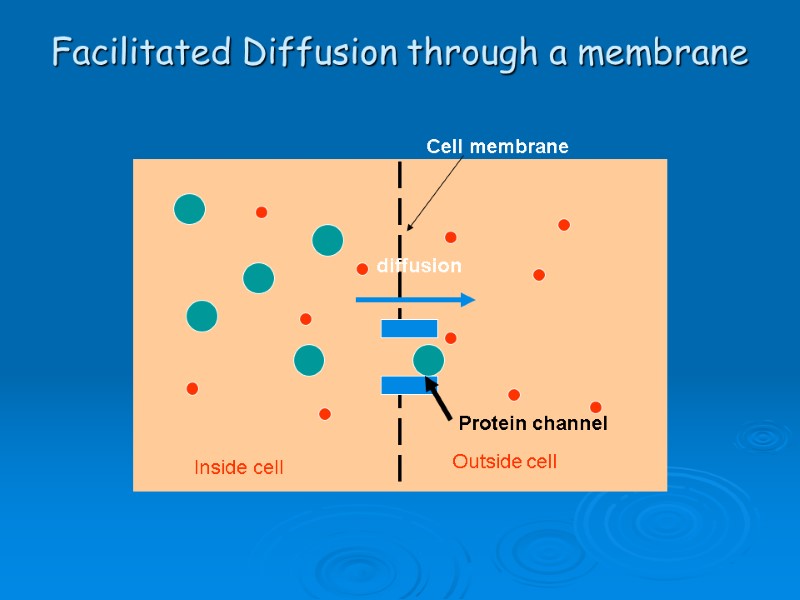
Facilitated Diffusion through a membrane Cell membrane Inside cell Outside cell Protein channel diffusion
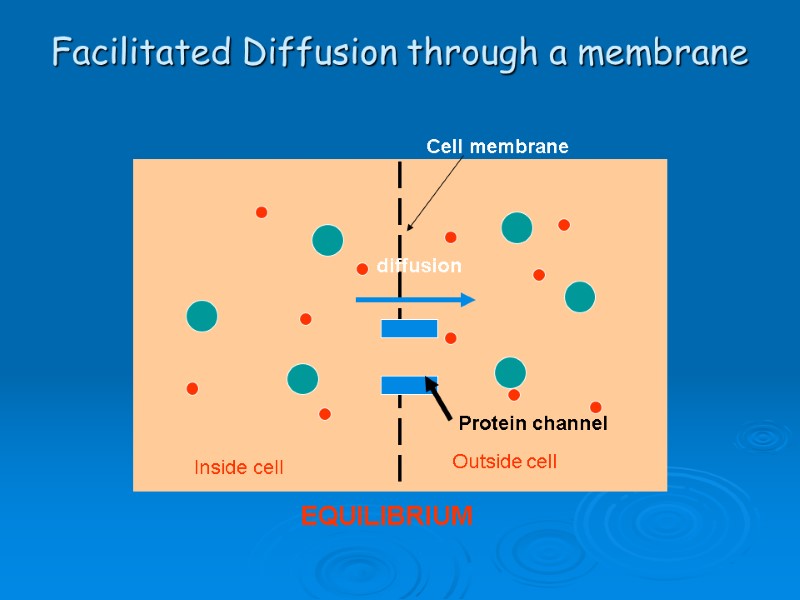
Facilitated Diffusion through a membrane Cell membrane Inside cell Outside cell Protein channel diffusion EQUILIBRIUM
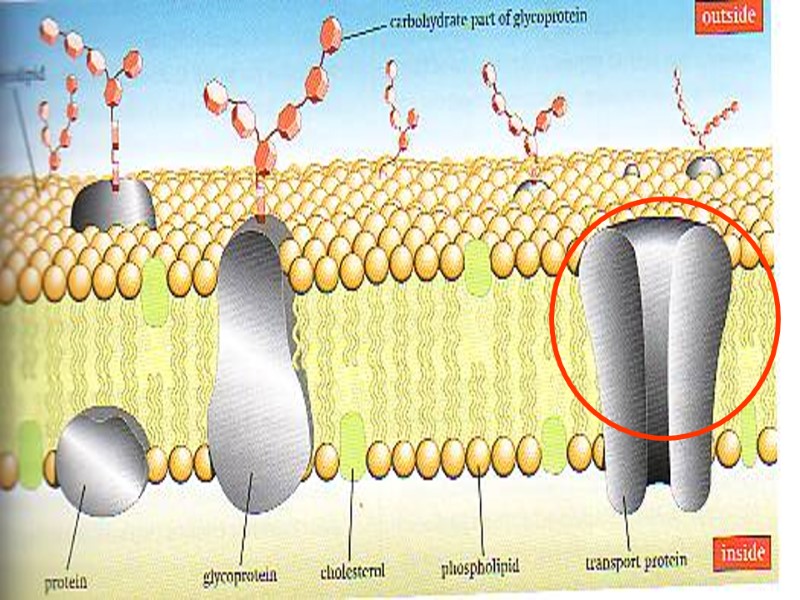
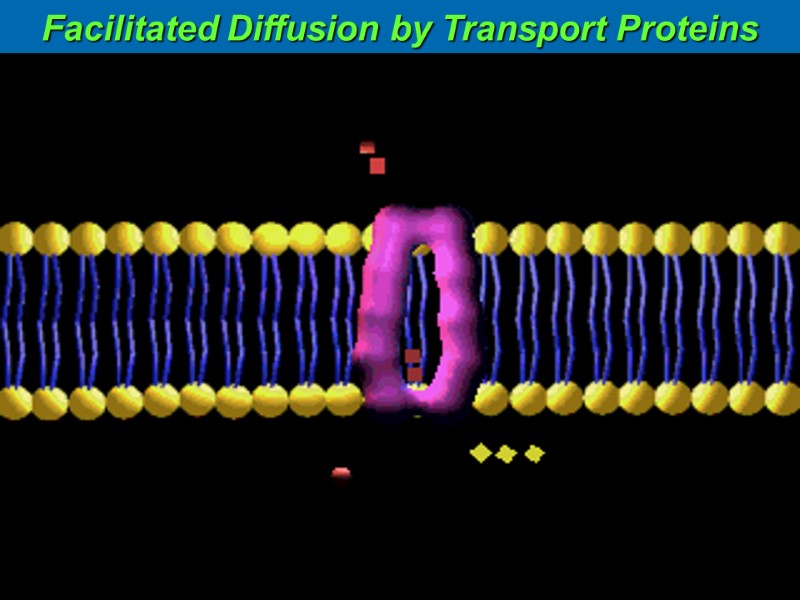
Facilitated Diffusion by Transport Proteins
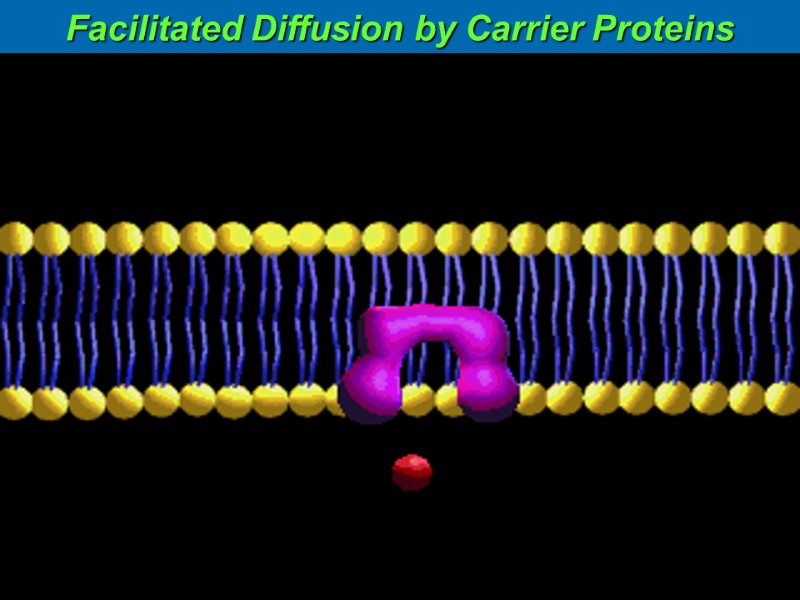
Facilitated Diffusion by Carrier Proteins
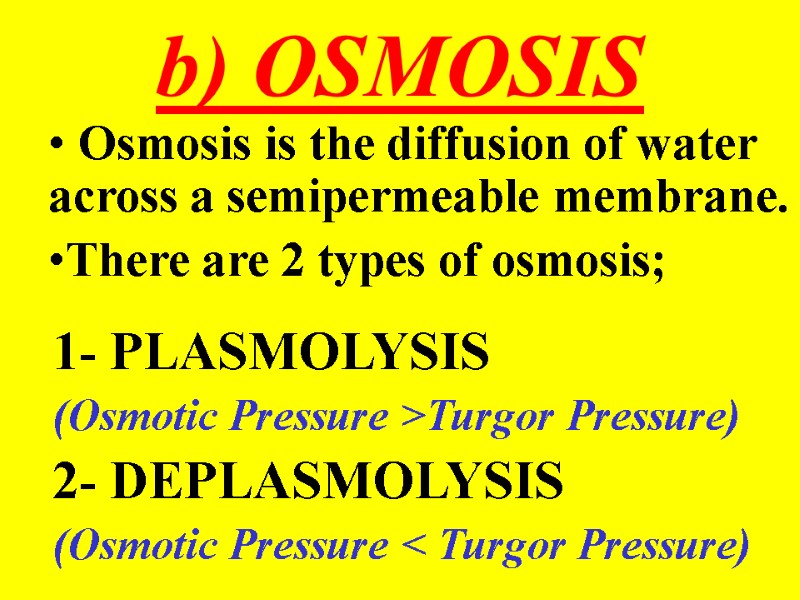
b) OSMOSIS Osmosis is the diffusion of water across a semipermeable membrane. There are 2 types of osmosis; 1- PLASMOLYSIS (Osmotic Pressure >Turgor Pressure) 2- DEPLASMOLYSIS (Osmotic Pressure < Turgor Pressure)
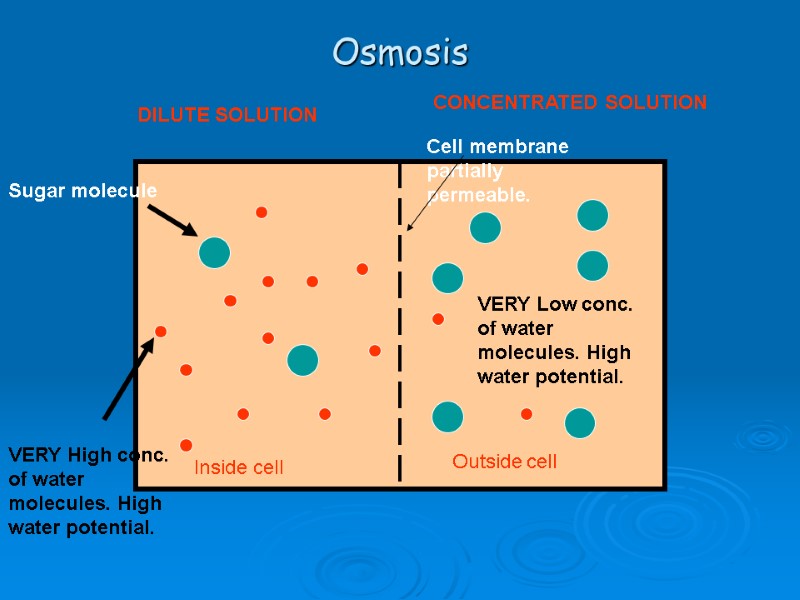
Osmosis Cell membrane partially permeable. Inside cell Outside cell VERY High conc. of water molecules. High water potential. VERY Low conc. of water molecules. High water potential. Sugar molecule DILUTE SOLUTION CONCENTRATED SOLUTION
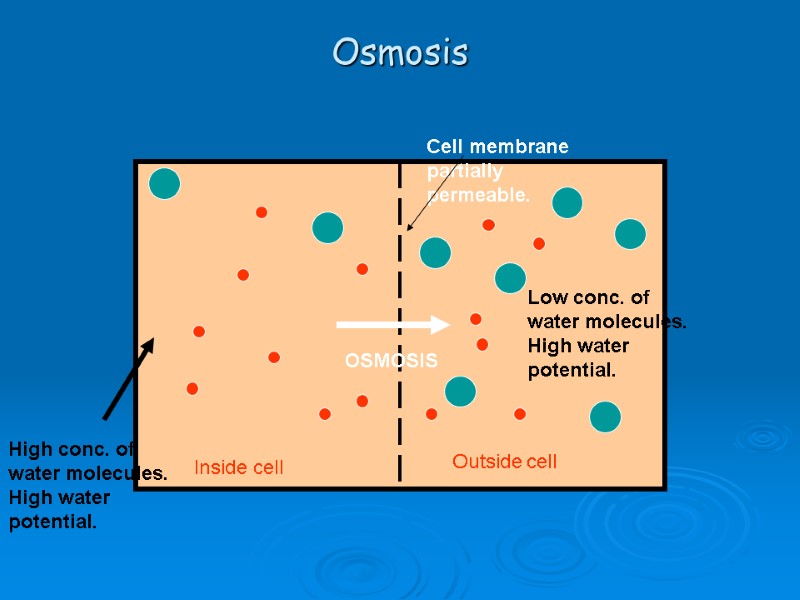
Osmosis Cell membrane partially permeable. Inside cell Outside cell High conc. of water molecules. High water potential. Low conc. of water molecules. High water potential. OSMOSIS
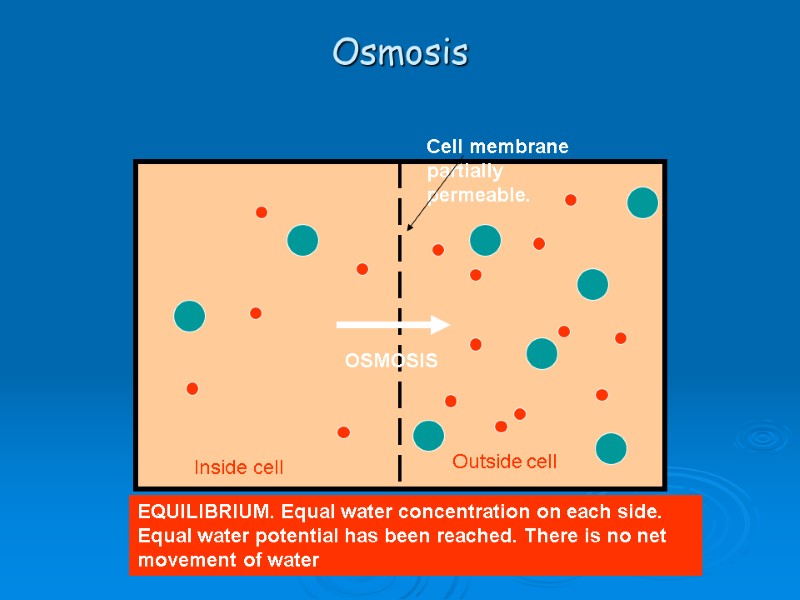
Osmosis Cell membrane partially permeable. Inside cell Outside cell OSMOSIS EQUILIBRIUM. Equal water concentration on each side. Equal water potential has been reached. There is no net movement of water
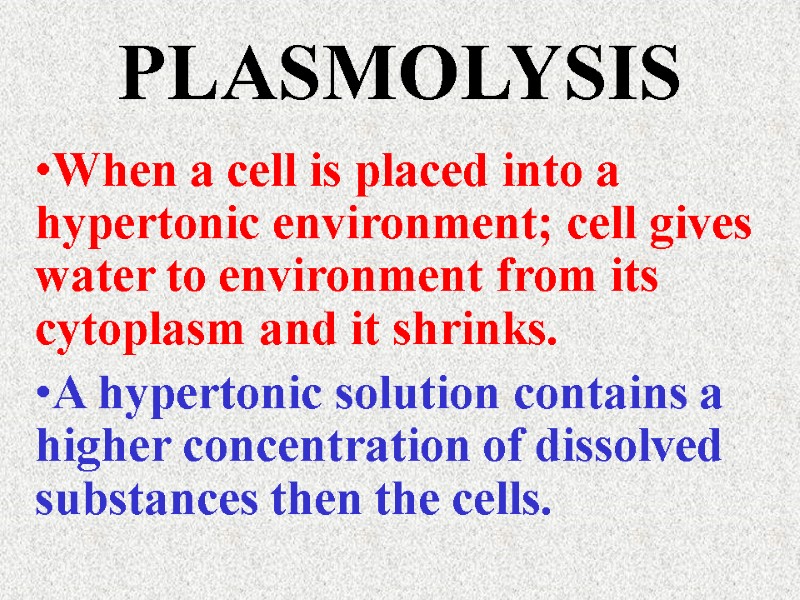
PLASMOLYSIS When a cell is placed into a hypertonic environment; cell gives water to environment from its cytoplasm and it shrinks. A hypertonic solution contains a higher concentration of dissolved substances then the cells.

DEPLASMOLYSIS If a cell is put into a hypotonic environment; cell absorbs water from its environment and it swells. A hypotonic solution contains lower concentration of dissolve substances then the cell. If the cell has no cell wall for expelling the excess water it will burst.
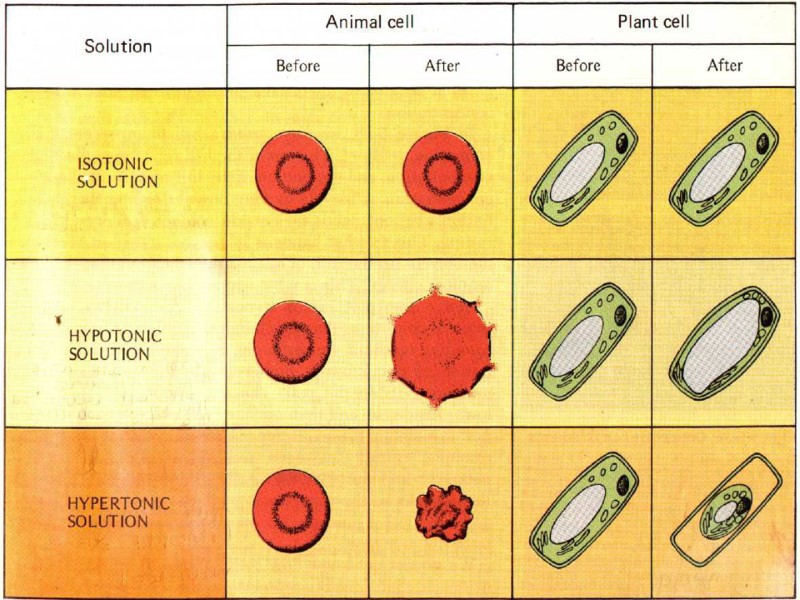
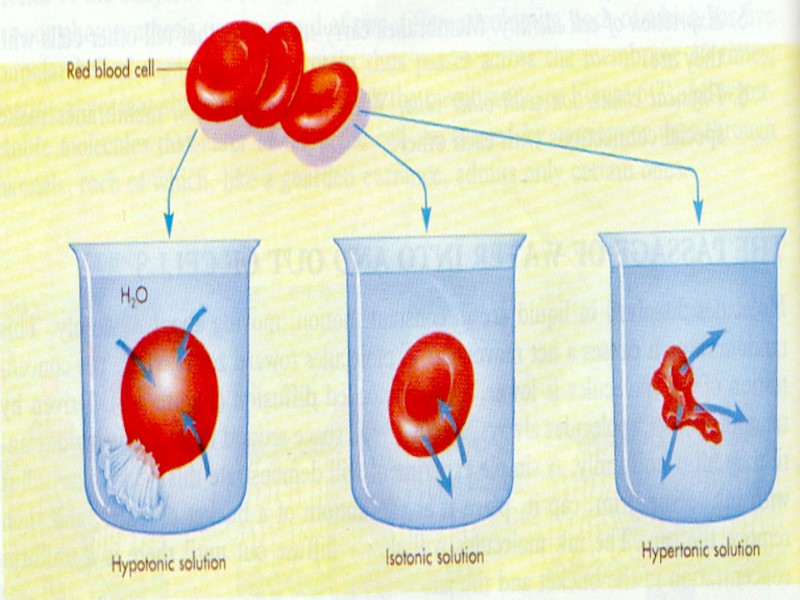
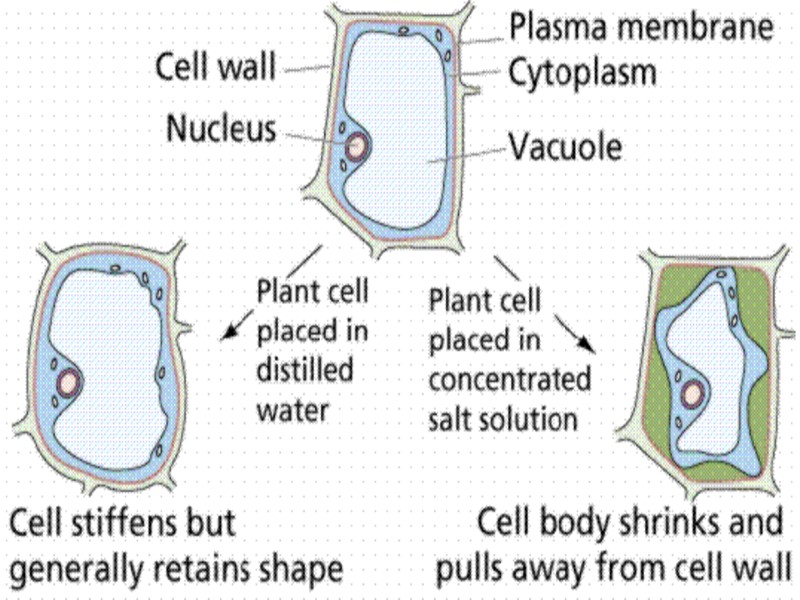
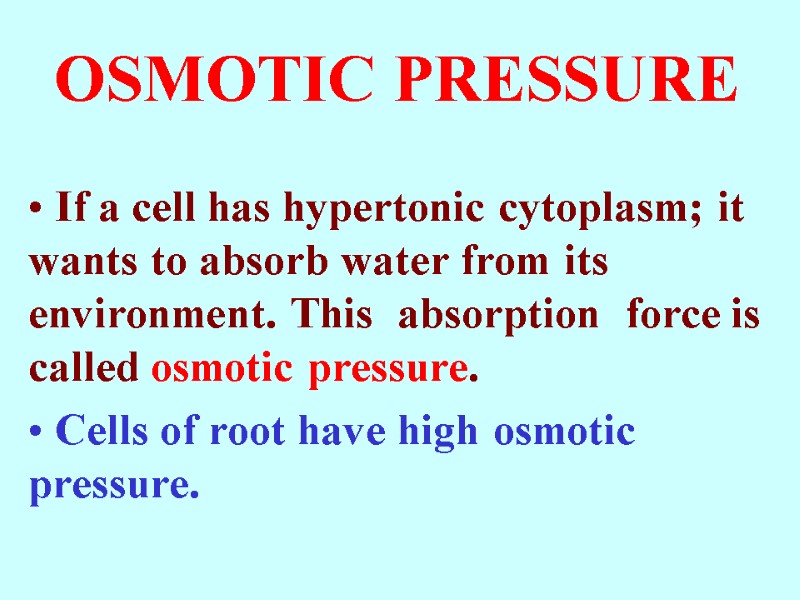
OSMOTIC PRESSURE If a cell has hypertonic cytoplasm; it wants to absorb water from its environment. This absorption force is called osmotic pressure. Cells of root have high osmotic pressure.
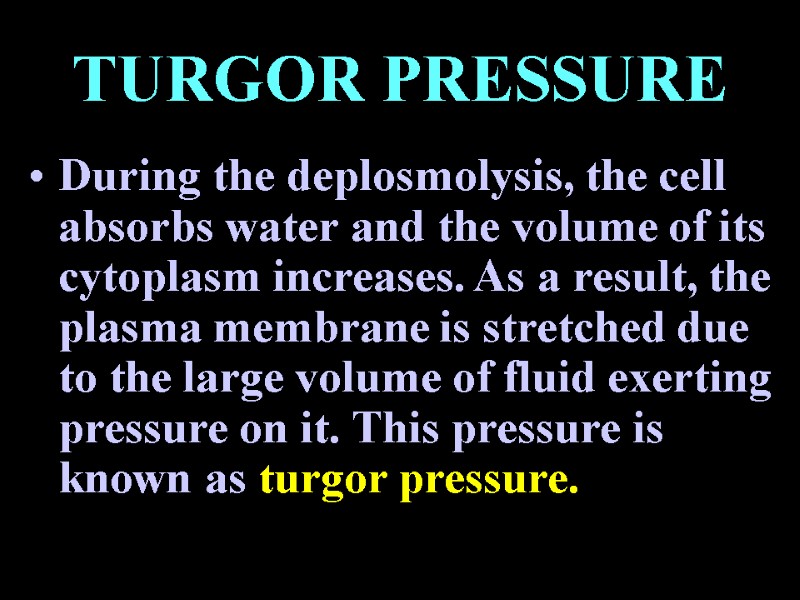
TURGOR PRESSURE During the deplosmolysis, the cell absorbs water and the volume of its cytoplasm increases. As a result, the plasma membrane is stretched due to the large volume of fluid exerting pressure on it. This pressure is known as turgor pressure.
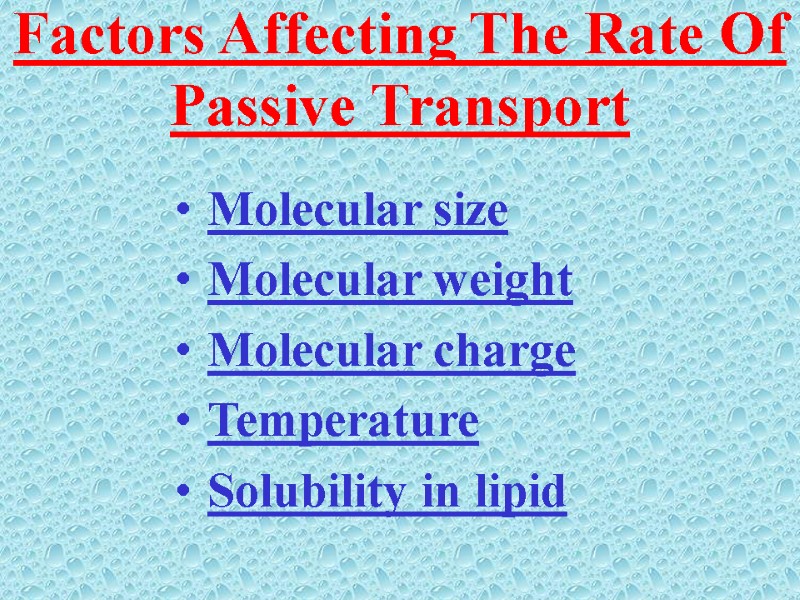
Factors Affecting The Rate Of Passive Transport Molecular size Molecular weight Molecular charge Temperature Solubility in lipid
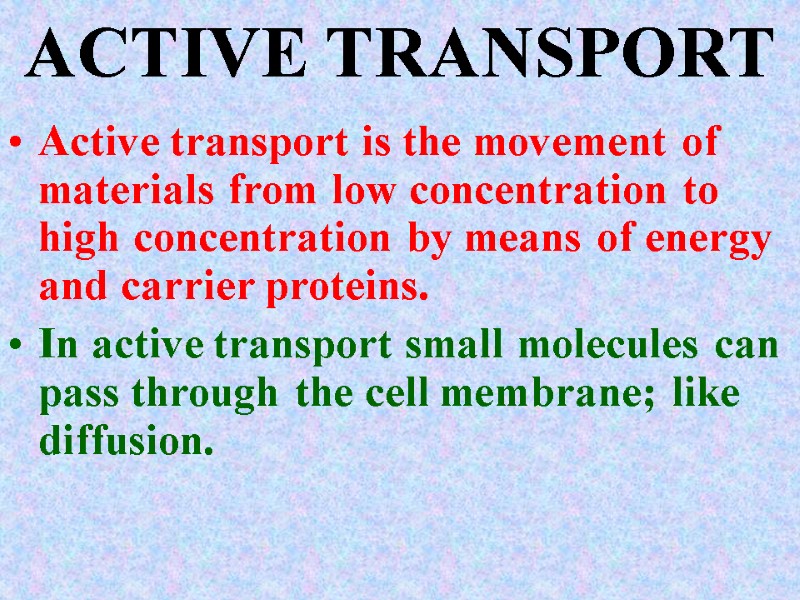
ACTIVE TRANSPORT Active transport is the movement of materials from low concentration to high concentration by means of energy and carrier proteins. In active transport small molecules can pass through the cell membrane; like diffusion.
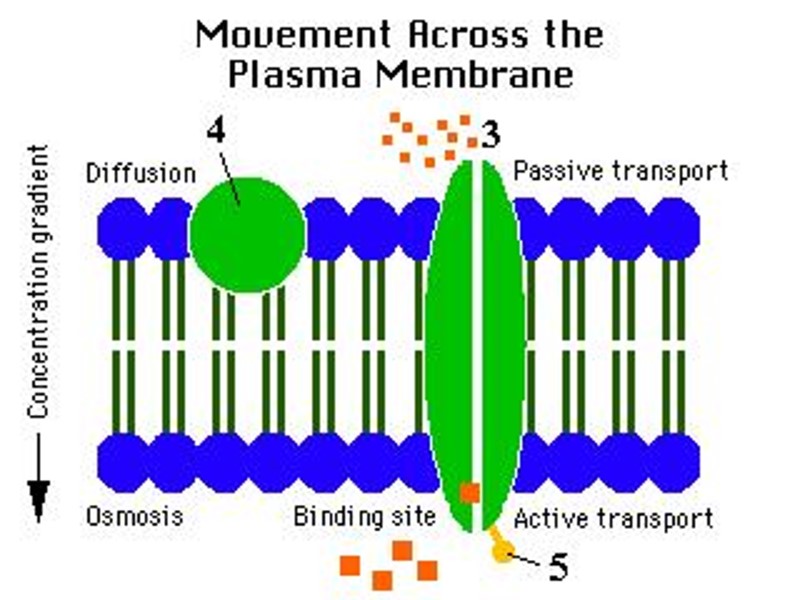
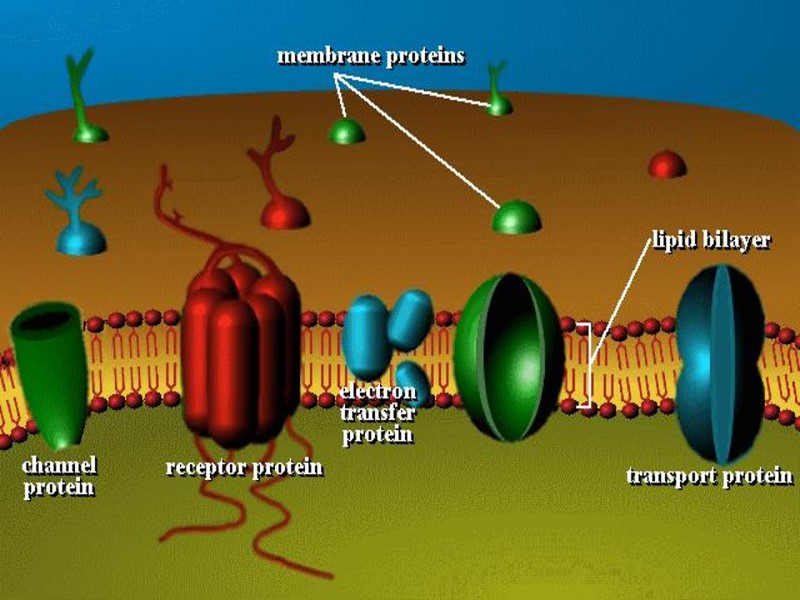
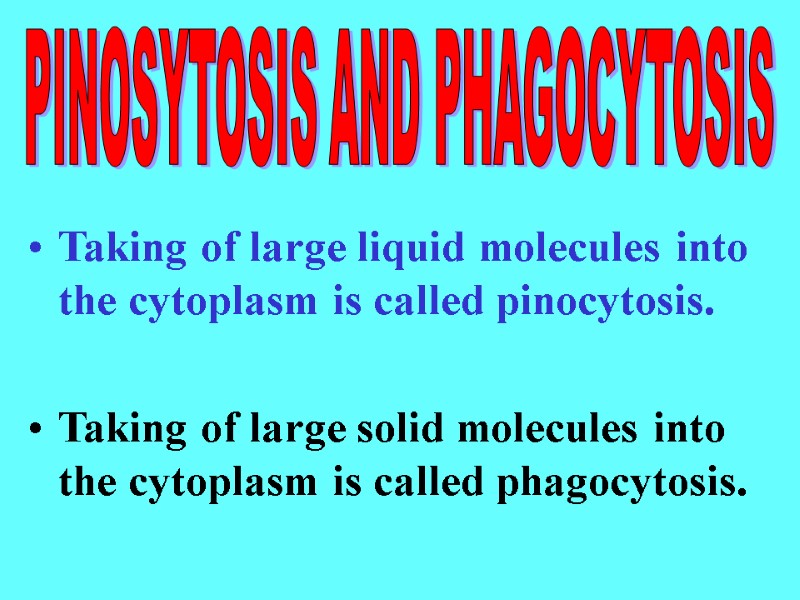
Taking of large liquid molecules into the cytoplasm is called pinocytosis. Taking of large solid molecules into the cytoplasm is called phagocytosis. PINOSYTOSIS AND PHAGOCYTOSIS
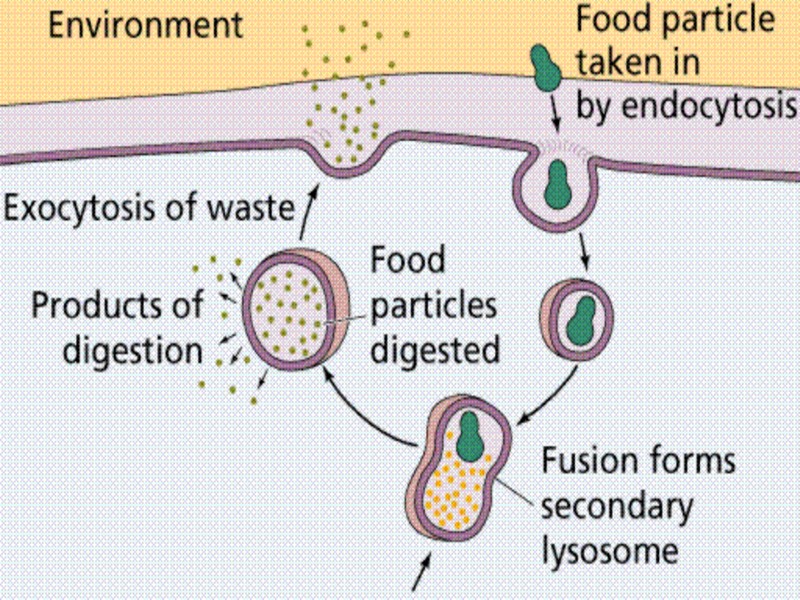
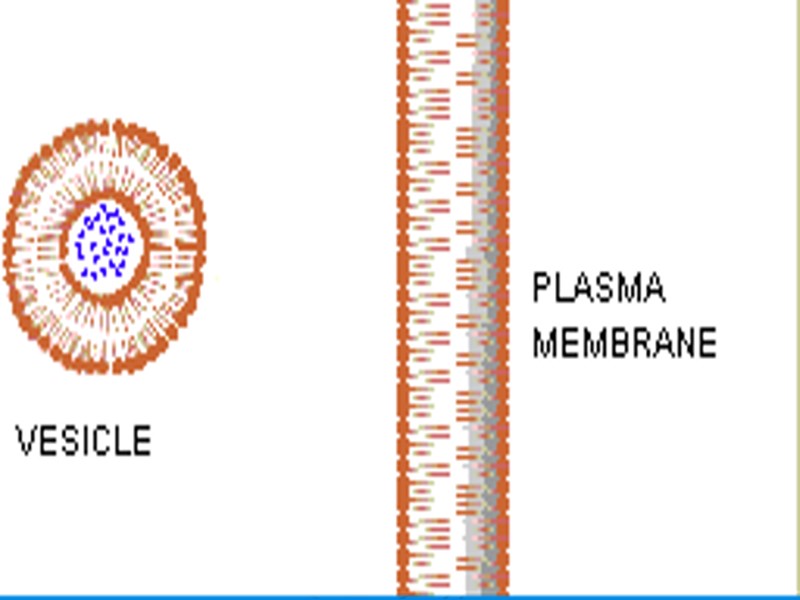
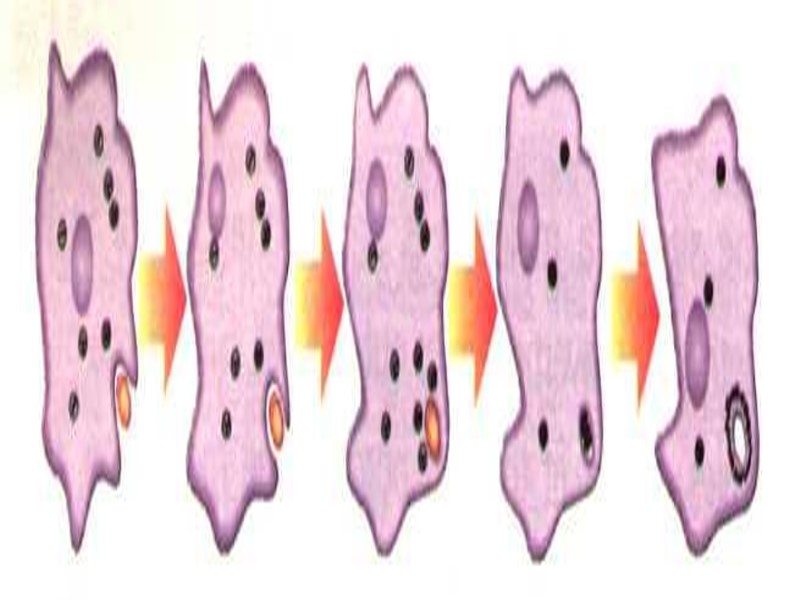
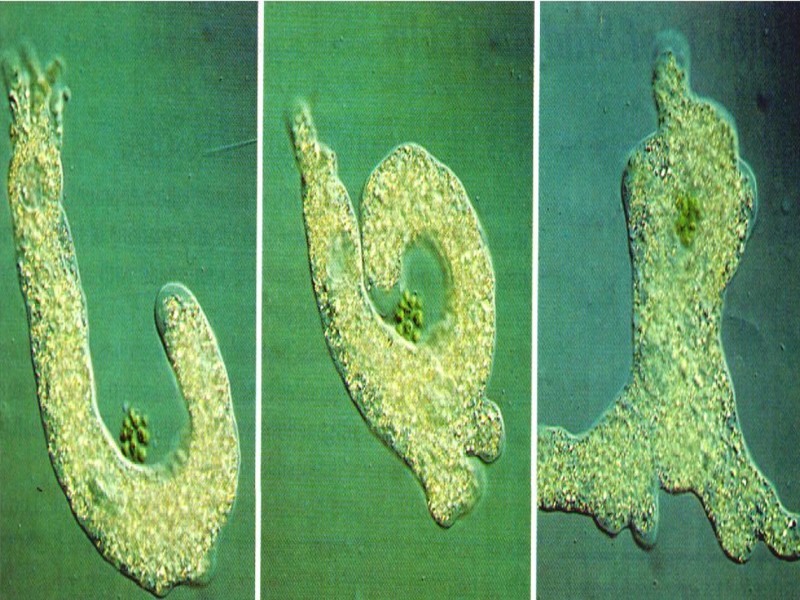
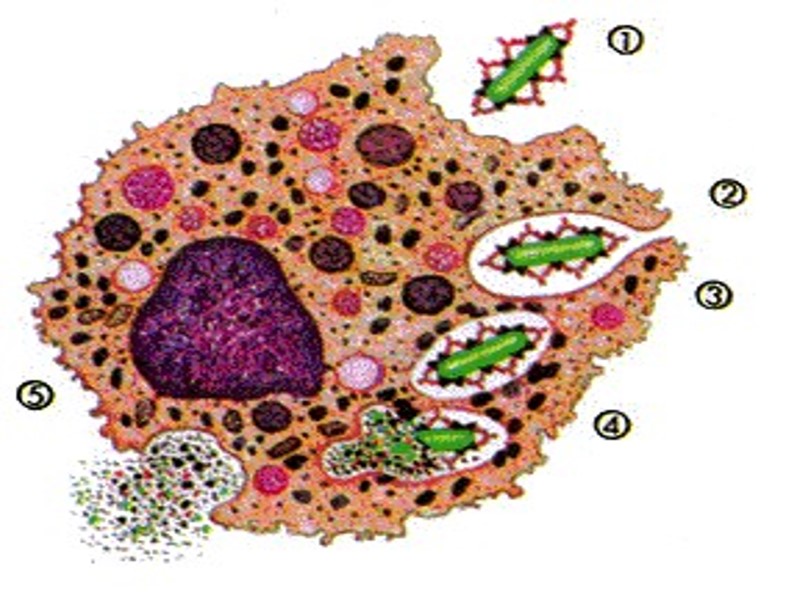
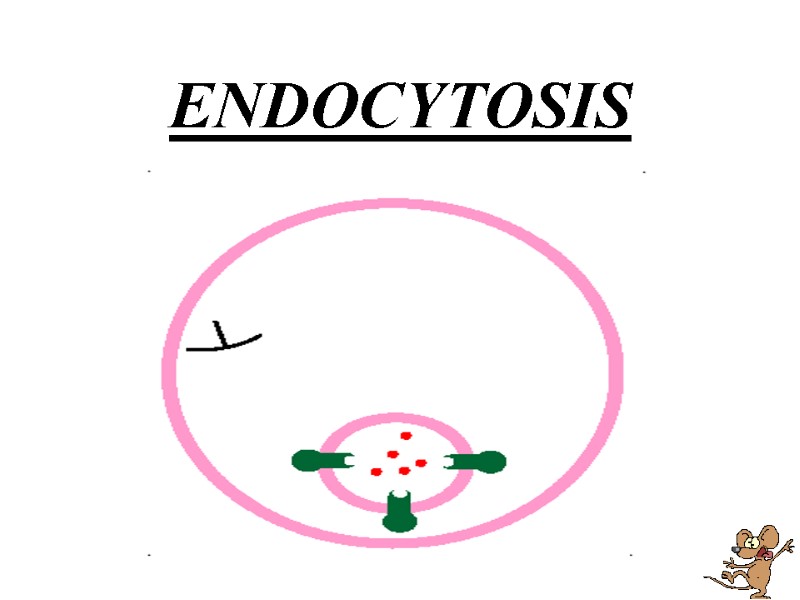
ENDOCYTOSIS
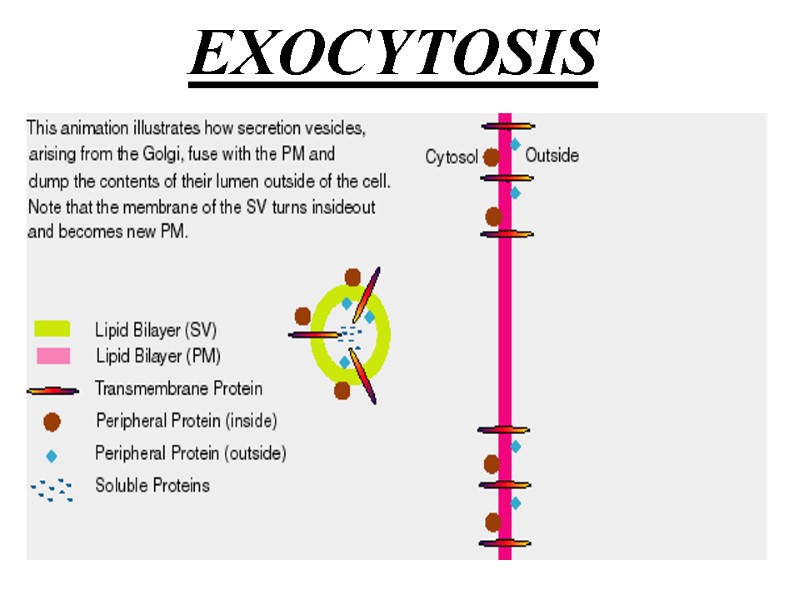
EXOCYTOSIS
15174-03-cellular_transport.ppt
- Количество слайдов: 42

